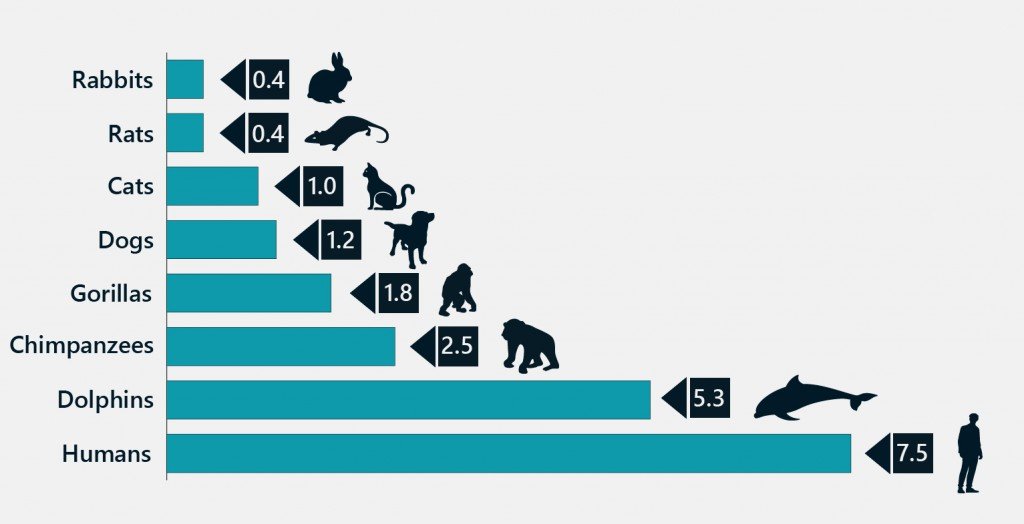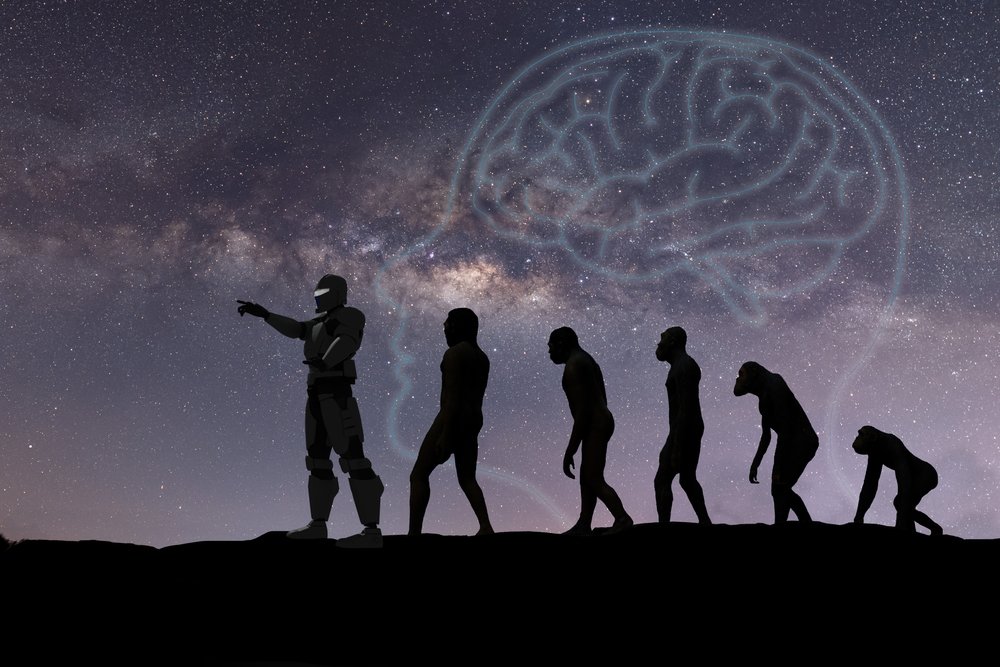Human intelligence is a remarkable phenomenon that sets us apart from all other species on Earth. Our cognitive abilities allow us to create complex societies, develop advanced technologies, and understand abstract concepts like mathematics, art, and philosophy. But why did humans evolve such extraordinary intelligence, and how did this process unfold? This article delves into the evolutionary origins of human intelligence, exploring the key factors that contributed to our cognitive superiority.
1. The Roots of Intelligence: From Primate Ancestors to Early Hominins
The evolution of human intelligence can be traced back to our primate ancestors. Primates, such as monkeys and apes, already possess relatively large brains for their body size compared to other mammals. This is linked to their complex social behaviors, use of tools, and ability to learn from their environment. These traits laid the groundwork for the development of higher cognitive functions in early hominins, the group that includes modern humans and our closest extinct relatives.
Approximately 7 million years ago, early hominins began to diverge from the common ancestor we share with chimpanzees. One of the earliest known hominins, Sahelanthropus tchadensis, exhibited a mix of primitive and derived features, suggesting that even at this early stage, there were selective pressures favoring increased cognitive abilities. As hominins evolved, their brains became larger and more complex, paving the way for advanced problem-solving, social cooperation, and communication.
2. Brain Expansion: The Growth of the Human Mind
One of the most significant developments in the evolution of human intelligence is the dramatic increase in brain size. Over the last 2 million years, the brains of our ancestors grew rapidly, particularly with the emergence of the genus Homo. For example, Homo habilis, which lived around 2.4 to 1.5 million years ago, had a brain size of approximately 600 to 750 cubic centimeters (cc). This was a significant increase from earlier hominins, such as Australopithecus, whose brain sizes ranged from 400 to 500 cc.
The trend continued with Homo erectus, whose brain size reached about 900 to 1,100 cc, and later with Homo neanderthalensis and Homo sapiens, whose brain sizes averaged around 1,200 to 1,600 cc. This expansion of brain volume, particularly in regions associated with higher cognitive functions like the prefrontal cortex, is linked to improvements in memory, decision-making, and complex thought processes.
But why did this brain expansion occur? One theory is that as early humans faced increasingly complex social and environmental challenges, there was strong selective pressure for enhanced cognitive abilities. Larger brains allowed for better problem-solving, tool use, and social interaction, all of which were crucial for survival and reproduction.
3. The Social Brain Hypothesis: Intelligence and Social Complexity
A leading explanation for the evolution of human intelligence is the Social Brain Hypothesis. This theory suggests that the demands of living in complex social groups were a major driving force behind the evolution of large brains and advanced cognitive abilities. As early humans formed larger and more stable groups, they needed to navigate intricate social networks, remember relationships, and communicate effectively.
In this context, intelligence would have been advantageous for managing social alliances, understanding the intentions of others, and cooperating within a group. The ability to deceive, empathize, and predict the behavior of others would have provided significant survival and reproductive advantages. Over time, individuals with better social and cognitive skills would have been more successful in passing on their genes, leading to the evolution of increasingly sophisticated brains.
4. Tool Use and Technological Innovation: Intelligence in Action
The development and use of tools represent another key factor in the evolution of human intelligence. Early humans, such as Homo habilis, are often called the “handy man” because of their association with stone tools. These tools were relatively simple, but they marked a significant cognitive leap. Creating even basic tools requires foresight, planning, and the ability to visualize the end product before it’s made.
As tool use became more complex, it likely spurred further cognitive development. The manufacture and use of tools not only required fine motor skills and coordination but also the ability to learn from others, pass down knowledge, and innovate. This process of cultural transmission meant that technological advances could accumulate over generations, leading to increasingly sophisticated tools and technologies.
The cognitive demands of tool use would have created a feedback loop, where individuals with better cognitive abilities could make and use more effective tools, leading to greater survival and reproductive success. This, in turn, would have driven the evolution of even greater intelligence.
5. The Role of Language: Communication and Cognitive Complexity
Language is perhaps the most important factor in the evolution of human intelligence. It allows us to share information, express complex ideas, and transmit cultural knowledge across generations. The development of language required significant cognitive adaptations, including the ability to produce a wide range of sounds, understand syntax and grammar, and use symbols to represent abstract concepts.
The emergence of language would have provided enormous advantages to early humans. It facilitated cooperation and social cohesion, enabled more effective teaching and learning, and allowed for the development of complex social structures and cultural practices. Language also made it possible to plan for the future, coordinate large groups, and share information about resources, dangers, and opportunities.
The cognitive demands of language, such as memory, attention, and social cognition, likely played a significant role in driving the evolution of the human brain. As language became more complex, so too did the cognitive abilities required to use it effectively.
6. Diet and Brain Evolution: The Nutritional Demands of Intelligence
The evolution of the human brain is also closely linked to changes in diet. Brains are energy-intensive organs, consuming about 20% of the body’s energy despite making up only about 2% of its mass. To support a larger brain, early humans needed a diet rich in calories and nutrients.
The shift from a predominantly plant-based diet to one that included more animal protein and fat was crucial for brain expansion. The consumption of meat, particularly after the control of fire allowed for cooking, provided the necessary calories and nutrients, such as omega-3 fatty acids, which are important for brain development. Additionally, the development of cooking made food easier to digest and more nutrient-dense, freeing up energy for brain growth.
This dietary change not only provided the resources needed to support a larger brain but also influenced social and cognitive behaviors. For example, hunting large game required cooperation, strategic thinking, and communication, all of which would have selected for greater intelligence.
7. Environmental Challenges: Adaptation and Cognitive Flexibility
The environments in which early humans lived were often unpredictable and challenging. Rapid climate changes, shifting landscapes, and the need to compete with other predators and scavengers would have placed significant pressures on early human populations. In such environments, cognitive flexibility—the ability to adapt to new situations, solve problems creatively, and learn from experience—would have been a significant advantage.
Humans’ ability to innovate, plan, and use tools allowed them to exploit a wide range of environments, from dense forests to open savannas, and eventually to spread across the globe. This adaptability is a hallmark of human intelligence and is closely tied to our capacity for cultural evolution, which allows us to modify our behavior and technology in response to changing conditions.
8. The Future of Human Intelligence: Where Are We Headed?
The evolution of human intelligence is an ongoing process. As we move into the future, our cognitive abilities will continue to be shaped by both biological and cultural factors. Advances in technology, changes in society, and new challenges, such as climate change and resource scarcity, will create new pressures and opportunities for cognitive adaptation.
Moreover, the potential for genetic and technological enhancement raises questions about the future trajectory of human intelligence. Will we continue to evolve naturally, or will we take control of our own cognitive development? The answers to these questions will shape not only the future of human intelligence but also the very nature of what it means to be human.
Conclusion: Understanding Our Cognitive Evolution
The evolution of human intelligence is a complex interplay of biological, social, and environmental factors. From the expansion of our brains to the development of language and technology, numerous forces have shaped the remarkable cognitive abilities that define our species. Understanding this evolutionary journey helps us appreciate the unique capabilities that have allowed humans to become the most cognitively advanced species on Earth.
FAQs
Q1: What is the Social Brain Hypothesis?
The Social Brain Hypothesis suggests that the demands of living in complex social groups drove the evolution of large brains and advanced cognitive abilities in humans. It posits that intelligence evolved primarily to manage social relationships and navigate social networks.
Q2: Why did human brains become larger over time?
Human brains became larger due to a combination of factors, including the need for enhanced cognitive abilities to solve complex problems, develop technology, communicate through language, and navigate social interactions. Changes in diet, particularly the consumption of animal protein and fat, also provided the necessary energy for brain growth.
Q3: How did tool use influence human evolution?
Tool use required advanced problem-solving skills, fine motor coordination, and the ability to learn and teach others. It created a feedback loop where individuals with better cognitive abilities could make and use more effective tools, driving further brain development and cognitive evolution.
Q4: What role did diet play in the evolution of human intelligence?
Diet played a crucial role by providing the necessary energy and nutrients to support a larger brain. The shift to a diet rich in animal protein and fat, and later the development of cooking, allowed early humans to consume more calories and essential nutrients, facilitating brain expansion.
Q5: How did language contribute to the evolution of intelligence?
Language allowed humans to communicate complex



